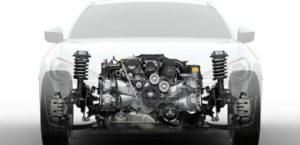The 2.0-liter Great Wall GW4C20A gasoline engine has been produced in China since 2017 and is installed only on a restyled version of the popular Haval H9 SUV. Such a power unit is essentially a forced version of the engine under the symbol GW4C20.
Own 2.0-liter engines: GW4C20, GW4C20A, GW4C20B, GW4C20NT.
Specifications
| Production years | since 2017 |
| Displacement, cc | 1967 |
| Fuel system | direct injection |
| Power output, hp | 245 |
| Torque output, Nm | 350 |
| Cylinder block | cast iron R4 |
| Block head | aluminum 16v |
| Cylinder bore, mm | 82.5 |
| Piston stroke, mm | 92 |
| Compression ratio | 10.0 |
| Features | DOHC |
| Hydraulic lifters | yes |
| Timing drive | chain |
| Phase regulator | on all shafts |
| Turbocharging | BorgWarner K04 |
| Recommended engine oil | 5W-40 |
| Engine oil capacity, liter | 5.5 |
| Fuel type | petrol |
| Euro standards | EURO 5 |
| Fuel consumption, L/100 km (for Haval H9 2018) — city — highway — combined |
12.8 9.5 10.5 |
| Engine lifespan, km | ~220 000 |
| Weight, kg | 175 (with attachments) |
The engine was installed on:
- Haval H9 I in 2017 – 2021.
Disadvantages of the Great Wall GW4C20A engine
- This engine has not been produced for a very long time, but so far has proven itself well.
- The most troublesome thing is carbon deposits on the valves due to the direct injection system.
- There are cases of turbine failure due to a bent impeller or a burst pipe.
- Also on specialized forums you can find complaints about the fuel pump and failures in the ignition system.
- With frequent and sharp acceleration, the timing chain can already stretch to 120,000 km.






